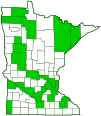tufted globetail
(Sphaerophoria contigua)
Conservation • Description • Habitat • Ecology • Distribution • Taxonomy
|
|
||||||||||||||
Description |
Tufted globetail is a small, wasp-mimic, hoverfly. It occurs throughout North American from Alaska to Texas and from the west coast to the east coast. It is very common to abundant in southern Canada and the northern United States, including in Minnesota. Adults are ¼″ to ⅜″ (6.5 to 8.8 mm) in length. The head is distinctly wider than the thorax. There are two large compound eyes on the sides of the head and three small simple eyes (ocelli) in a triangle on the top of the head. The compound eyes are bare, with no erect hairs. On the male they meet on the upper part of the face, corresponding to the forehead (frons). On the female they are clearly separated. The frons is yellow. On the female, the frons has a broad black stripe in the middle with many fine wrinkles. The face is yellow. The protruding mouthpart (proboscis) is short and fleshy. The antennae are short and have just three segments. On the third segment there is a stiff, forward-pointing bristle (arista). The thorax is large, shiny, and black. The front and back portions are divided by a groove (transverse suture) that is visible on the sides but disappears in the middle. There are two faint, grayish stripes on the upper (dorsal) surface, and a bright yellow stripe on each lateral margin that ends abruptly at the transverse suture. The exoskeletal plate between the wing bases (scutellum) is large, rounded, bright yellow, and opaque. The abdomen is long, slender, and almost parallel-sided. On the male it is slightly constricted in the middle, on the female it is slightly expanded in the middle. On the female, segments 2 through 4 are black with a broad yellow that band is not divided in the middle. Segment 5 has a narrow yellow band that is usually interrupted in the middle. Segment 6 is deep yellow with a small black spot in the middle at the front margin and sometimes a pair of smaller black spots near the rear margin. Segments 4 through 7 have a narrow, bright yellow band at the rear margin. Segments 2 and 3 have bright yellow between the segments that is visible only when the abdomen is arched. On the male, the dark areas of segments 3 and 4, rarely also segment 2, are deep yellow. On the underside of the abdomen, the male has large, globe-shaped genitalia, and a pair of lobe-like structures (surstyli) with which he grasps the female during copulation. The upper lobe of the each surstylus is long and slender and has a long, dense, compact tuft of straight hairs at the tip, a feature that gives this hoverfly its common name. The legs are yellow. The femurs on the hind leg is slender, not thickened. The last part of the leg (tarsus), corresponding to the foot, is blackish at the tip on some individuals. The wings are clear. There is a spurious vein between the radius (R) and media (M) veins. The anal cell is long and is closed near the wing margin. The marginal, R5, and M2 cells are also closed. |
Size |
Total length: ¼″ to ⅜″ (6.5 to 8.8 mm) |
Similar Species |
Habitat |
|
Ecology |
Season |
Early May to late September |
Behavior |
|
Life Cycle |
|
Larva Food |
Aphids |
Adult Food |
Flower nectar |
Distribution |
||
|
Sources Telford, Horace S.. (1939). The Syrphidae of Minnesota. University of Minnesota. Minnesota Agricultural Experiment Station. |
|
| 9/18/2024 | ||
Occurrence |
||
Widespread, common, and abundant |
||
Taxonomy |
|
Order |
|
Suborder |
Brachycera |
Infraorder |
Cyclorrhapha |
Zoosection |
Aschiza |
Family |
Syrphidae (Hover Flies) |
Subfamily |
|
Tribe |
Syrphini |
Genus |
Sphaerophoria (globetails) |
Subordinate Taxa |
|
|
|
Synonyms |
|
Sphaerophoria fulvicauda Sphaerophoria nigricauda Syrphus cylindricus Syrphus encaustus |
|
Common Names |
|
tufted globetail |
|
Glossary
Arista
A large bristle on the upper side of the third segment of the antenna of a fly. Plural: aristae.
Femur
On insects and arachnids, the third, largest, most robust segment of the leg, coming immediately before the tibia. On humans, the thigh bone.
Frons
The upper front part of an insect’s face, roughly corresponding to the forehead.
Ocellus
Simple eye; an eye with a single lens. Plural: ocelli.
Proboscis
The tube-like protruding mouthpart(s) of a sucking insect.
Scutellum
The exoskeletal plate covering the rearward (posterior) part of the middle segment of the thorax in some insects. In Coleoptera, Hemiptera, and Homoptera, the dorsal, often triangular plate behind the pronotum and between the bases of the front wings. In Diptera, the exoskeletal plate between the abdomen and the thorax.
Tarsus
On insects, the last two to five subdivisions of the leg, attached to the tibia; the foot. On spiders, the last segment of the leg. Plural: tarsi.
Visitor Photos |
||
Share your photo of this insect. |
||
This button not working for you? |
||
Bobbi Johnson |
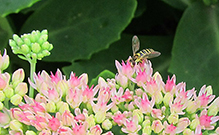 |
… from the garden |
Alfredo Colon |
||
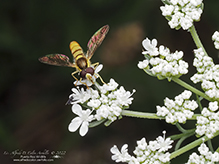 |
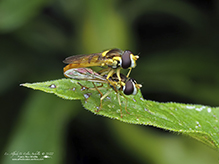 |
|
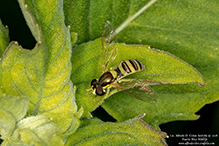 |
||
MinnesotaSeasons.com Photos |
||
|
||
|
||

Slideshows |
|

Visitor Videos |
||
Share your video of this insect. |
||
This button not working for you? |
||
|
Other Videos |
||
Tufted Globetail 1 HQ HD |
About
Jun 15, 2022 Profile of a Tufted Globetail. |

Visitor Sightings |
||
Report a sighting of this insect. |
||
This button not working for you? |
||
| Bobbi Johnson August 2024 |
Location: Silver Bay, MN … from the garden |
 |
| Alfredo Colon 8/17/2022 |
Location: Albany, NY |
 |
| Alfredo Colon 7/23/2018 |
Location: Woodbury, MN |
 |
MinnesotaSeasons.com Sightings |
||
|

Created: 2/26/2019 Last Updated: © MinnesotaSeasons.com. All rights reserved. |
